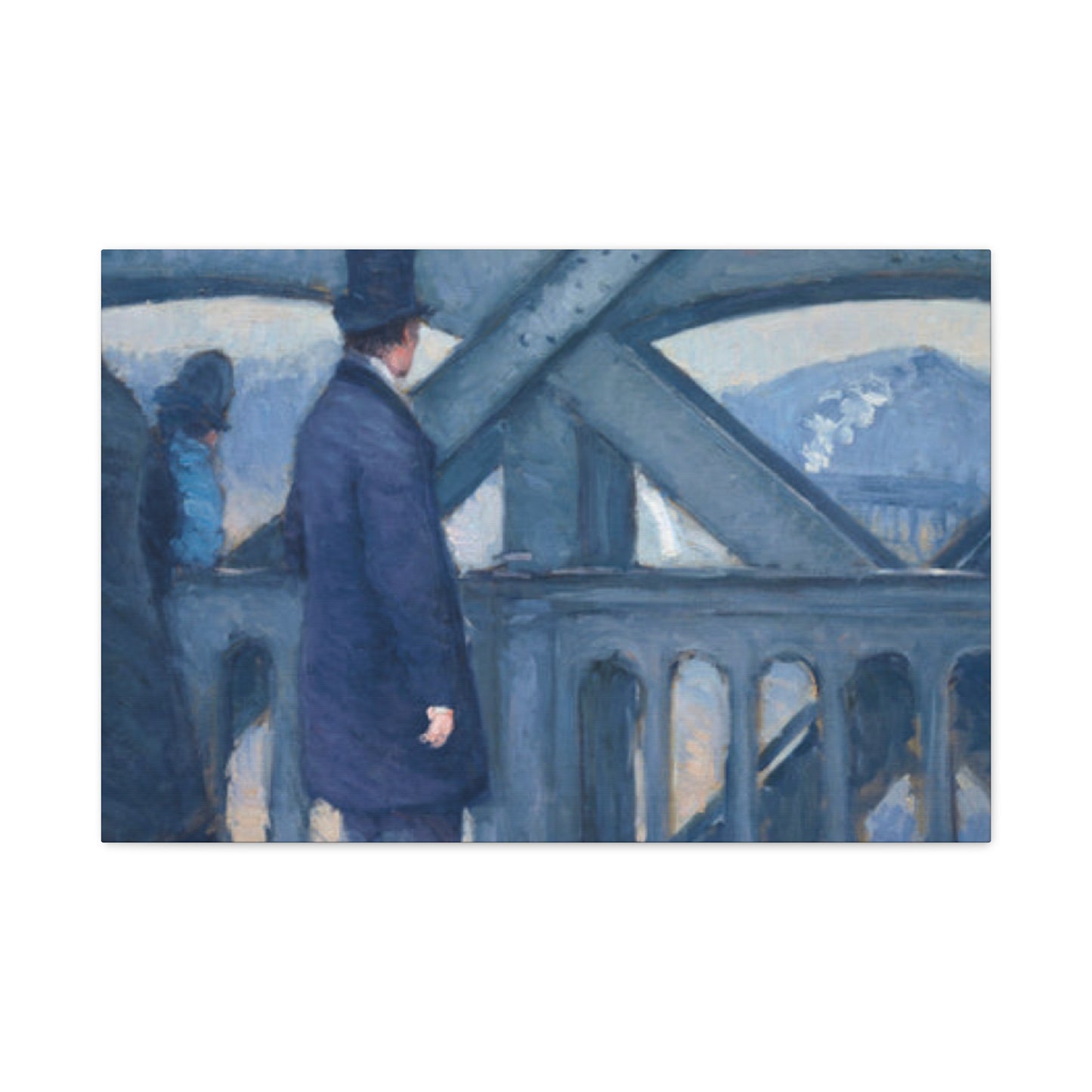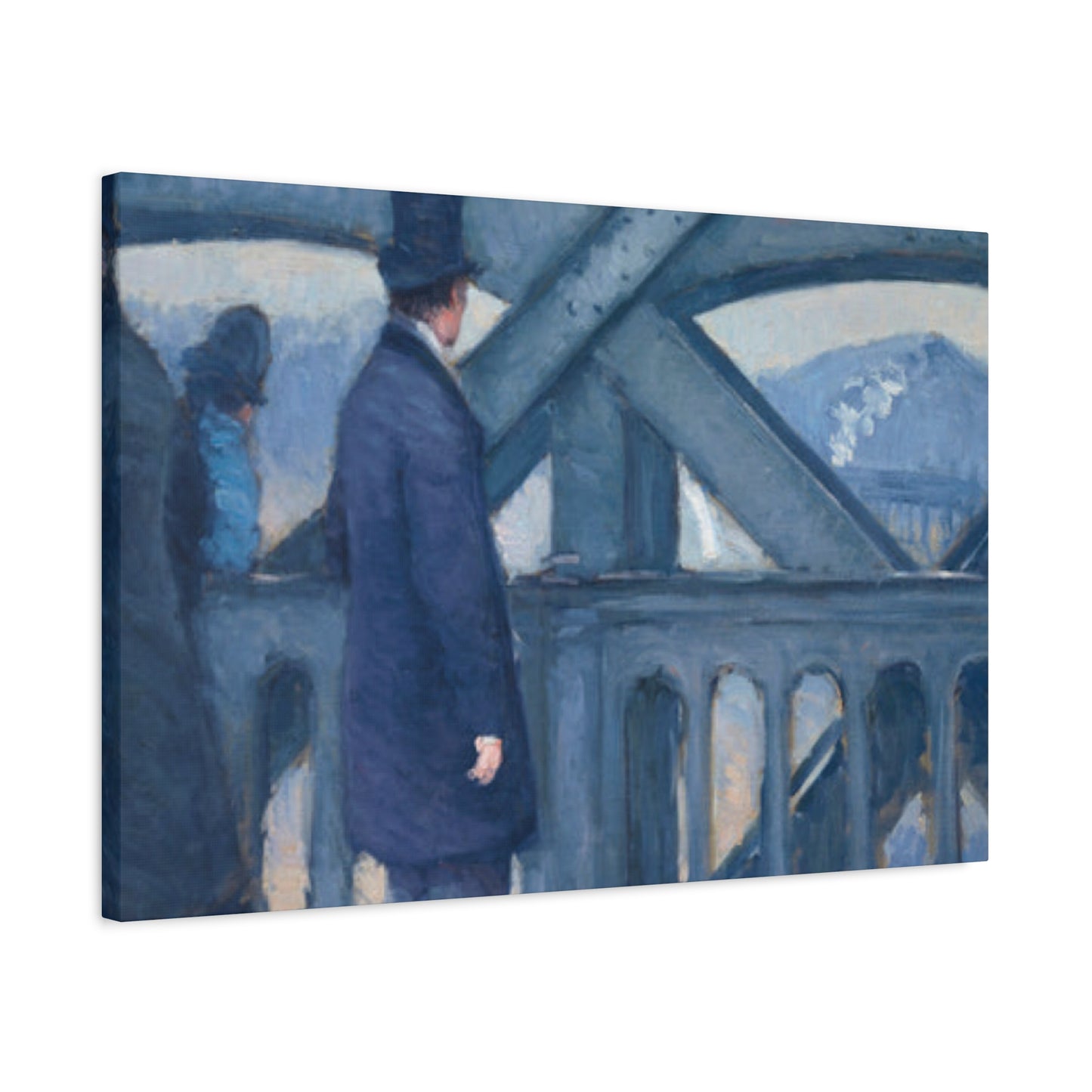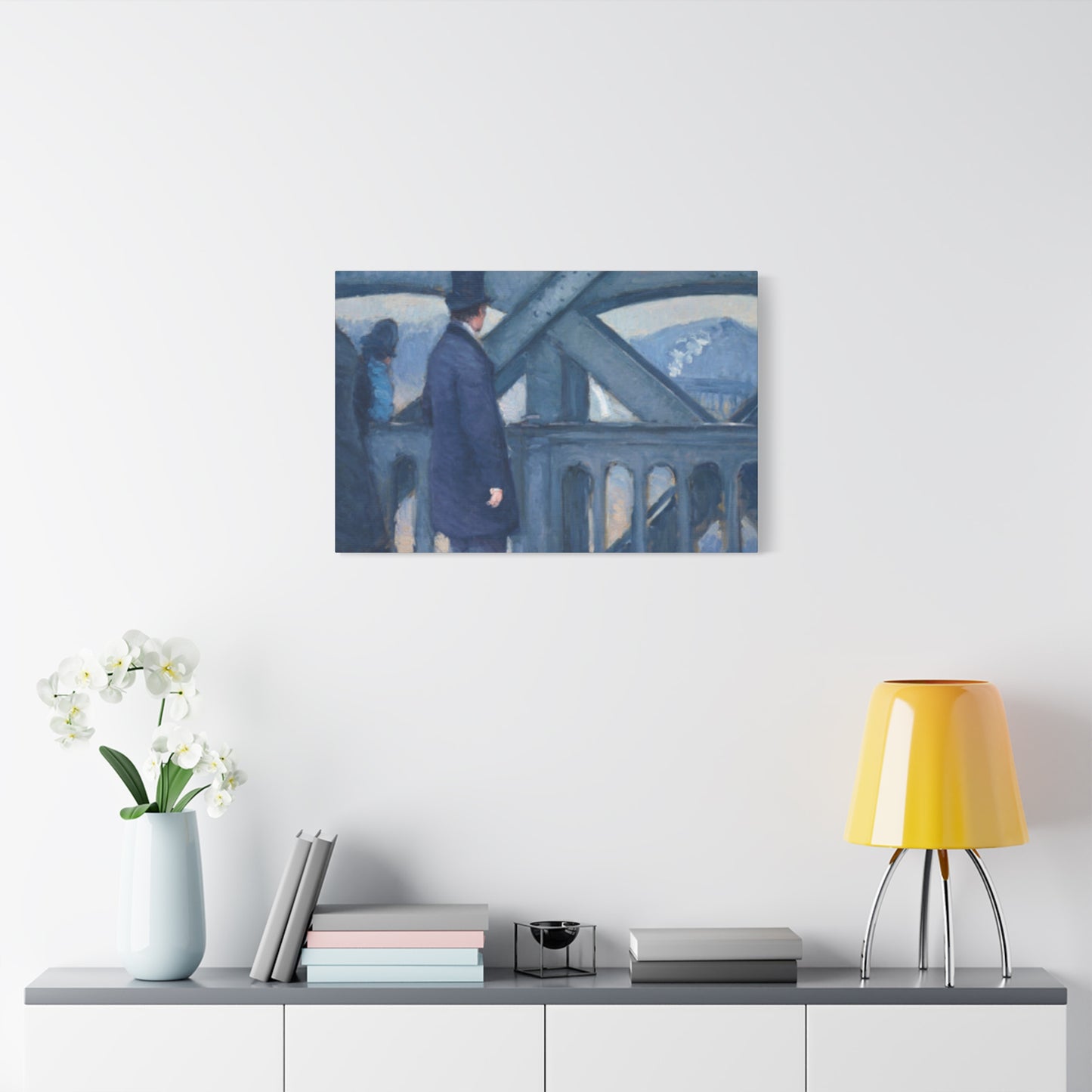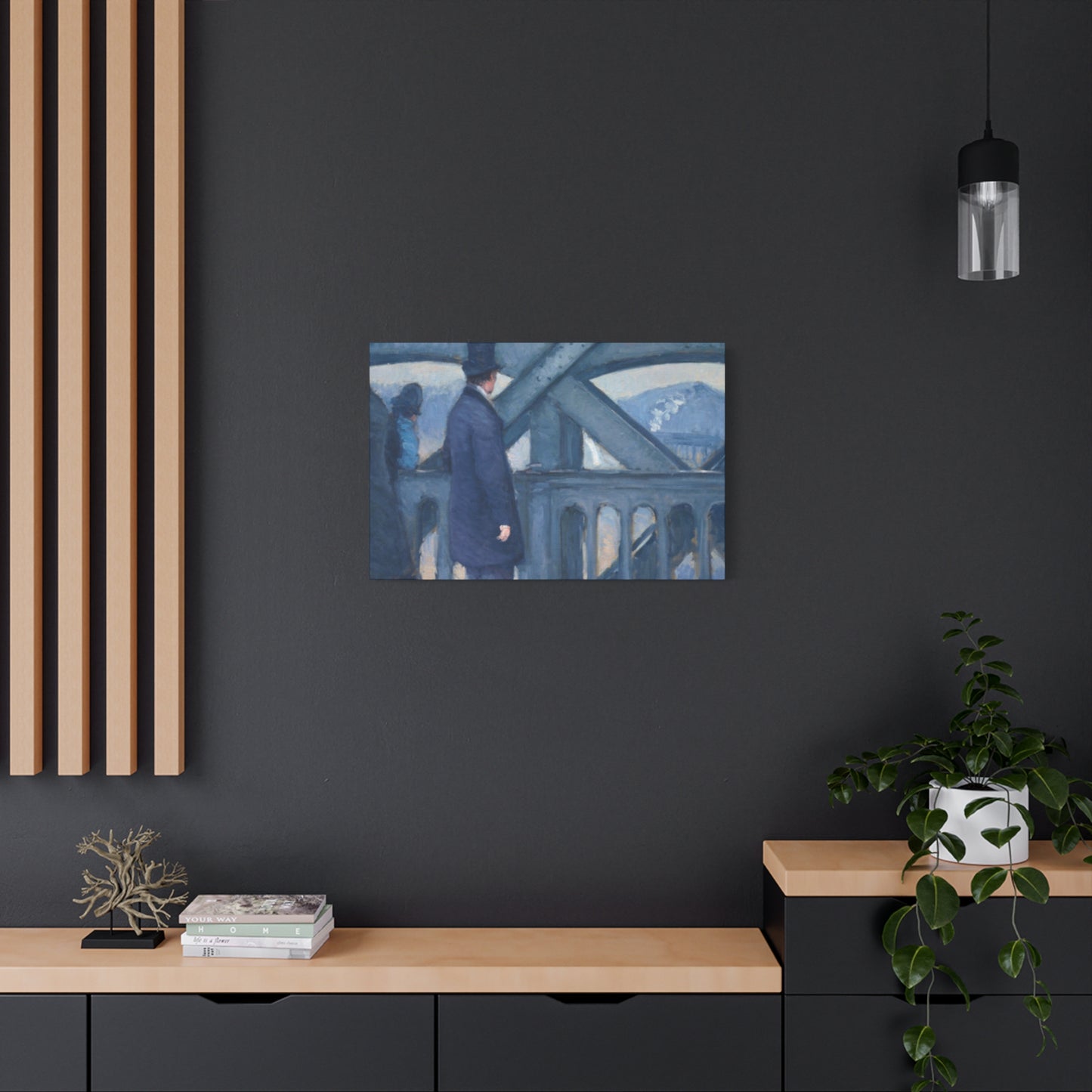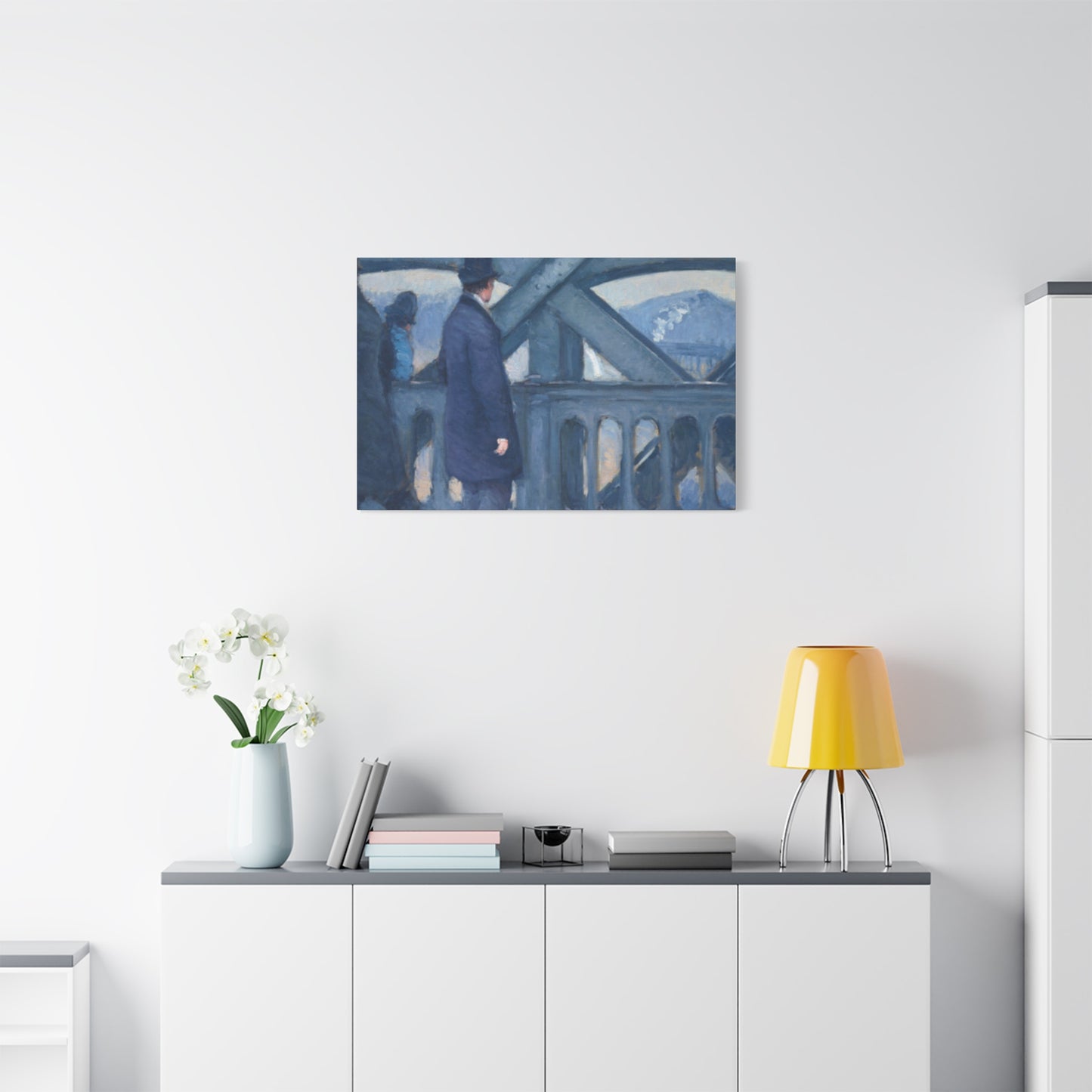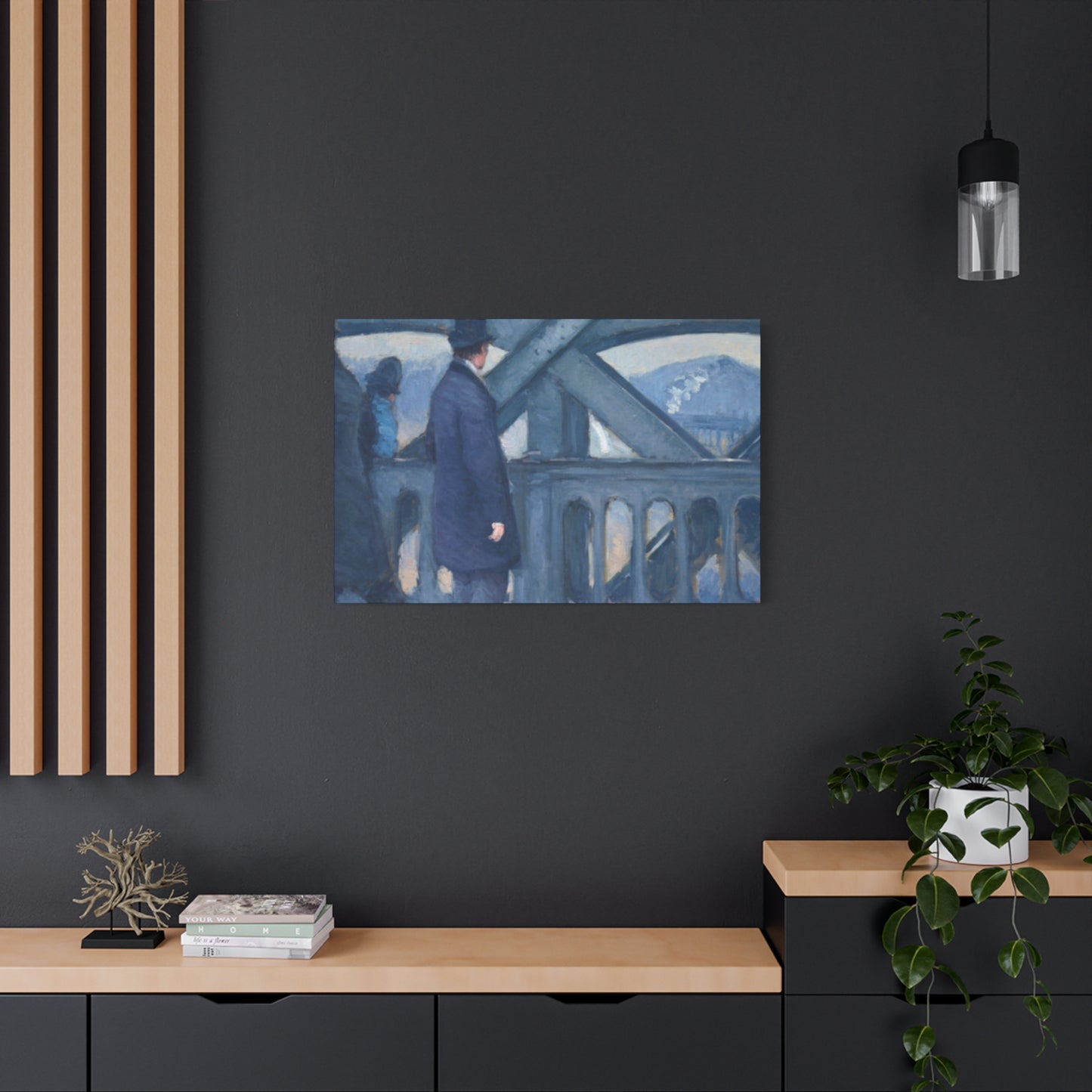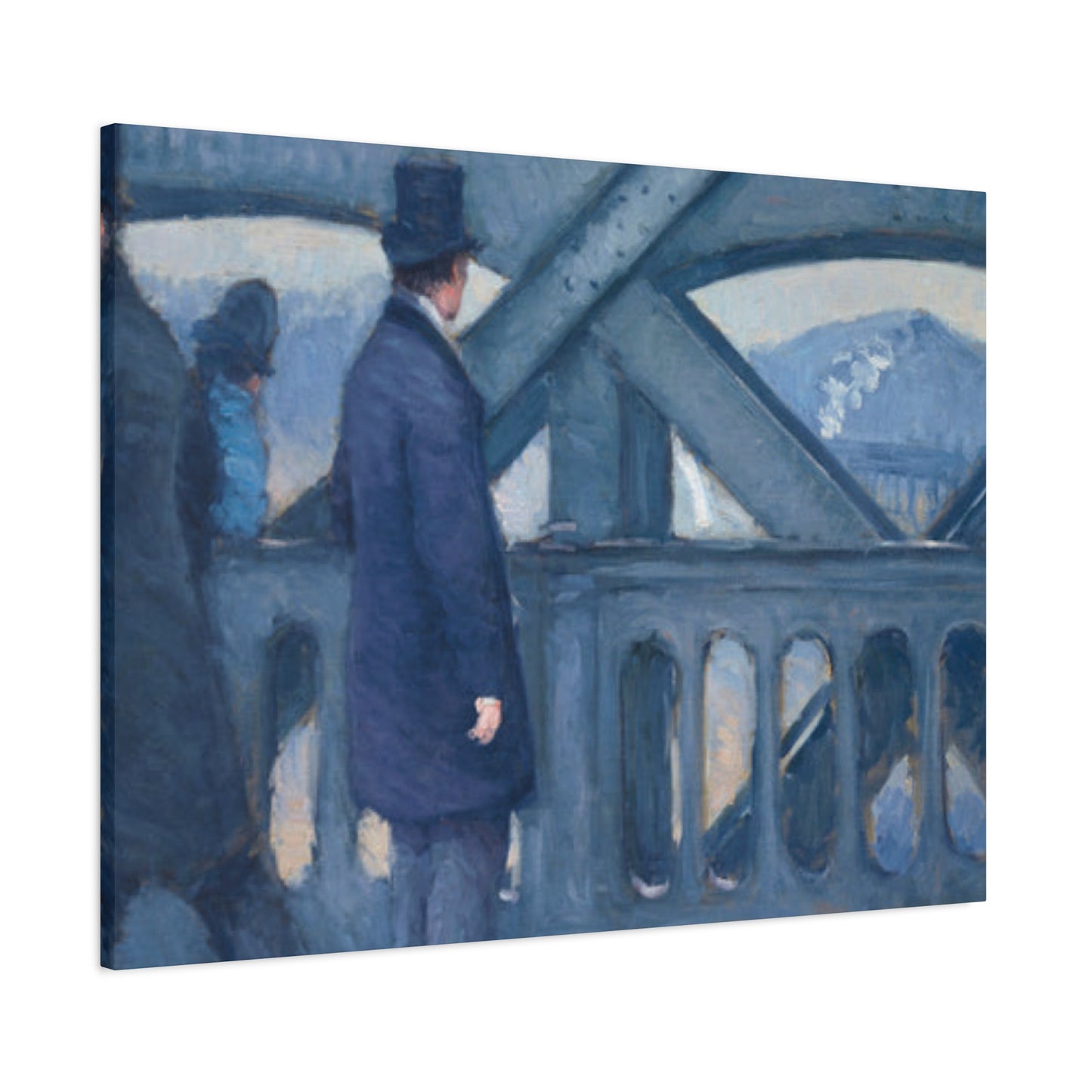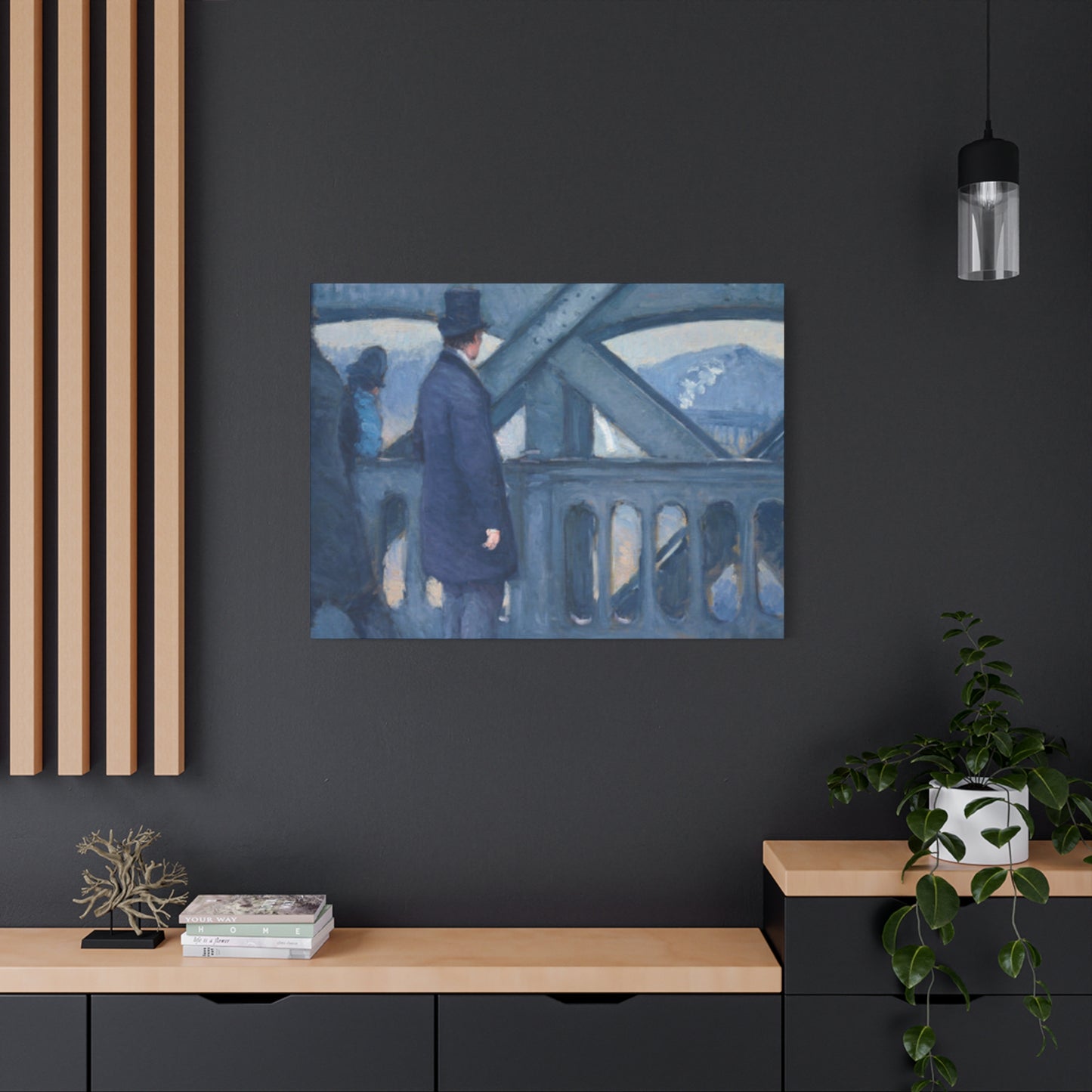Gustav's Bridge Wall Art: A Comprehensive Exploration of Artistic Mastery
Bridge wall art has captivated art enthusiasts for centuries, and Gustav's distinctive approach to depicting these architectural marvels has established him as a master of the genre. His paintings transform ordinary structures into extraordinary visual narratives that speak to the human experience of connection, journey, and transition. Through meticulous attention to detail, innovative use of color, and profound understanding of light and shadow, Gustav has created a body of work that resonates with viewers on multiple levels.
The significance of bridge paintings extends far beyond mere architectural documentation. These works serve as powerful metaphors for life's transitions, human connections, and the bridging of different worlds. Gustav's interpretation of bridges combines technical precision with emotional depth, creating pieces that function both as stunning visual art and as profound statements about the human condition. His ability to capture the essence of these structures while imbuing them with symbolic meaning has made his bridge wall art highly sought after by collectors and art lovers worldwide.
Gustav's mastery lies not only in his technical skill but also in his unique vision of how bridges can serve as focal points for exploring themes of unity, passage, and architectural beauty. Each painting tells a story, whether it's the weathered stone of an ancient crossing or the sleek lines of a modern suspension bridge. His work demonstrates how bridges serve as more than functional structures; they become symbols of human ingenuity, perseverance, and the eternal desire to connect disparate places and people.
Bridges in Gustav's Art
Gustav's artistic journey with bridge paintings began early in his career when he recognized the profound symbolic and aesthetic potential these structures offered. His approach to depicting bridges transcends mere architectural representation, transforming each structure into a character within a larger narrative. The artist's fascination with bridges stems from their dual nature as both functional engineering marvels and powerful symbolic elements representing connection, transition, and human achievement.
Throughout his extensive portfolio, Gustav has explored bridges from various angles, both literally and metaphorically. His paintings capture bridges in different seasons, weather conditions, and times of day, demonstrating how these structures interact with their environment and change character based on external conditions. This comprehensive approach allows viewers to experience bridges as living, breathing elements of the landscape rather than static architectural features.
Gustav's technique involves extensive field studies and preliminary sketches before creating his final paintings. He spends considerable time observing how light plays across bridge surfaces, how shadows create depth and dimension, and how the surrounding landscape interacts with the structure. This meticulous preparation is evident in the final works, which display an intimate knowledge of each bridge's unique characteristics and personality.
The artist's bridge paintings often feature human figures, albeit small and integrated into the composition, which helps establish scale and adds narrative elements to the work. These figures might be crossing the bridge, working on its maintenance, or simply enjoying the view from its span. Their presence reminds viewers that bridges exist to serve human needs and represent human achievement in overcoming natural obstacles.
Gustav's portfolio includes bridges from various periods and architectural styles, from ancient Roman aqueducts to modern cable-stayed designs. This diversity demonstrates his appreciation for the evolution of bridge engineering and design while highlighting the timeless appeal of these structures. Each painting captures not only the physical appearance of the bridge but also its historical and cultural significance within its setting.
Light on Bridges
The manipulation of light represents one of Gustav's greatest strengths as an artist, and his bridge paintings showcase this mastery in remarkable ways. His understanding of how light interacts with different materials, from weathered stone to gleaming steel, allows him to create paintings that seem to glow with inner illumination. The artist's treatment of light transforms bridges from mere architectural subjects into luminous focal points that draw the viewer's eye and hold their attention.
Gustav's approach to lighting varies dramatically depending on the time of day depicted in each painting. Morning light creates soft, golden hues that emphasize the warmth and welcoming nature of bridges as pathways to new beginnings. Midday sun produces sharp contrasts and defined shadows that highlight the structural details and engineering precision of these marvels. Evening light bathes bridges in romantic, ethereal glows that emphasize their role as connectors between different worlds and states of being.
The artist pays particular attention to how light reflects off water surfaces beneath bridges, creating dancing patterns of illumination that add movement and life to otherwise static compositions. These reflections often become integral parts of the overall design, with the bridge and its reflection forming a complete visual unit that enhances the sense of connection and continuity that bridges represent.
Seasonal variations in lighting provide Gustav with opportunities to explore different moods and atmospheres within his bridge paintings. Winter scenes feature cool, crisp light that emphasizes the stark beauty of bridges against snowy landscapes, while summer paintings glow with warm, abundant light that celebrates the joy and freedom associated with travel and exploration.
Gustav's mastery of backlighting techniques allows him to create dramatic silhouettes that emphasize the structural elegance of bridges while creating powerful emotional responses in viewers. These silhouetted bridges become symbols of hope and aspiration, reaching across voids toward distant shores and promising safe passage to those who trust in their strength.
The artist's understanding of atmospheric perspective enables him to use light and shadow to create convincing depth in his bridge paintings. Distant bridges fade into soft, hazy backgrounds while foreground structures remain sharp and detailed, creating a sense of spatial recession that draws viewers into the painting and makes them feel as though they could walk across the depicted bridges themselves.
Famous Gustav Bridge Paintings
Among Gustav's most celebrated works, several bridge paintings stand out as masterpieces that have defined his reputation and influenced countless other artists. These works demonstrate the full range of his technical abilities while showcasing his unique artistic vision and emotional depth. Each famous painting represents a milestone in Gustav's artistic development and contributes to the broader understanding of how bridges can serve as powerful subjects for fine art.
One of his most renowned works depicts a medieval stone bridge spanning a misty river valley, with morning light filtering through fog to create an almost mystical atmosphere. The painting captures the bridge at a moment when it seems to float between earth and sky, emphasizing its role as a connector between different realms. The meticulous attention to the weathered stone texture and the subtle gradations of light and shadow demonstrate Gustav's technical mastery while the overall composition conveys a sense of timeless permanence and quiet dignity.
Another celebrated painting features a modern suspension bridge during a dramatic sunset, with the cables and towers creating bold geometric patterns against the colorful sky. This work showcases Gustav's ability to find beauty in contemporary engineering while maintaining his characteristic emphasis on emotional resonance. The bridge appears both as a triumph of human ingenuity and as a delicate thread connecting two shores across a vast expanse of water and sky.
Gustav's painting of a covered bridge in autumn has become an icon of his work, with the warm colors of changing leaves creating a perfect complement to the rustic wooden structure. The composition balances the architectural elements of the bridge with the natural beauty of its surroundings, creating a harmonious whole that celebrates both human craftsmanship and natural splendor. The painting's popularity stems from its ability to evoke feelings of nostalgia and peaceful contemplation.
A particularly dramatic work depicts a railway bridge during a thunderstorm, with lightning illuminating the iron framework and rain creating atmospheric effects throughout the composition. This painting demonstrates Gustav's willingness to tackle challenging weather conditions and his ability to use dramatic lighting to enhance the emotional impact of his work. The bridge appears both vulnerable to nature's power and defiant in its continued function despite the storm.
Several of Gustav's famous bridge paintings feature water prominently, with reflections creating mirror images that double the visual impact of the structures. These works explore themes of duality and reflection while showcasing the artist's skill in depicting complex water effects. The bridges and their reflections create complete compositional units that emphasize the interconnectedness of architectural and natural elements.
Color in Bridge Art
Gustav's sophisticated use of color in his bridge paintings demonstrates his deep understanding of how hue, saturation, and value can be manipulated to create specific moods and enhance the symbolic content of his work. His color choices go beyond mere representation to become integral parts of the storytelling process, with each hue carefully selected to contribute to the overall emotional impact of the painting.
The artist's palette varies significantly depending on the specific bridge being depicted and the intended mood of the piece. Ancient stone bridges often feature warm earth tones that emphasize their connection to the natural landscape and their weathered, timeless character. These paintings typically employ browns, grays, and muted yellows that create a sense of age and permanence while suggesting the bridge's integration into its environment over centuries of service.
Modern bridges in Gustav's work often feature cooler colors that emphasize their technological sophistication and contemporary relevance. Blues, grays, and metallics dominate these compositions, creating a sense of precision and efficiency while highlighting the engineering achievements these structures represent. However, Gustav carefully balances these cooler tones with warmer accents that maintain the human connection and prevent the paintings from becoming cold or mechanical.
Seasonal color variations play crucial roles in Gustav's bridge paintings, with each season bringing its own distinctive palette and emotional associations. Spring paintings feature fresh greens and soft pastels that emphasize renewal and new beginnings, perfect themes for bridges as symbols of passage and transition. Summer works glow with warm yellows, rich blues, and vibrant greens that celebrate abundance and the joy of travel and exploration.
Gustav's autumn bridge paintings are particularly celebrated for their rich, warm color harmonies. Golden yellows, deep oranges, and russet browns create compositions that radiate warmth and nostalgia while celebrating the natural beauty that surrounds and complements architectural achievements. These colors also emphasize the cyclical nature of time and the enduring presence of bridges through changing seasons.
Winter scenes in Gustav's work feature predominantly cool colors, with whites, blues, and grays creating compositions that emphasize the stark beauty of bridges against snowy landscapes. However, the artist skillfully introduces warm color notes through lighting effects and architectural details that prevent these paintings from becoming forbiddingly cold while maintaining their seasonal character.
The artist's understanding of color temperature allows him to create convincing atmospheric effects and time-of-day variations in his bridge paintings. Warm morning light bathes structures in golden hues, while cool evening shadows create mysterious and contemplative moods. These temperature variations help establish the temporal setting of each painting while contributing to its overall emotional impact.
Bridge Symbols in Gustav's Work
The symbolic content of Gustav's bridge paintings extends far beyond their surface beauty, with each work containing layers of meaning that invite contemplation and interpretation. Bridges naturally serve as powerful metaphors for connection, transition, and overcoming obstacles, but Gustav's treatment of these themes demonstrates sophisticated understanding of how visual symbols can convey complex philosophical and emotional concepts.
In Gustav's artistic vocabulary, bridges represent the human desire to overcome natural barriers and connect with distant places and people. This symbolism appears consistently throughout his work, whether depicting ancient stone crossings or modern engineering marvels. Each bridge becomes a testament to human ingenuity and determination while serving as a visual metaphor for the connections that bind communities and cultures together.
The artist frequently uses bridges to explore themes of journey and passage, with the structures serving as visual representations of life transitions and personal growth. Figures crossing Gustav's painted bridges often represent individuals navigating important life changes, while the bridges themselves symbolize the tools and support systems that help people move from one stage of life to another.
Gustav's bridge paintings also explore themes of permanence and change, with the enduring structures contrasting with the flowing water beneath them and the changing skies above. This juxtaposition creates visual metaphors for the relationship between stability and flux in human experience, suggesting that while life constantly changes, certain elements provide consistent support and guidance.
The artist's treatment of bridges as connecting elements extends beyond their physical function to encompass emotional and spiritual connections. His paintings often suggest that bridges serve as pathways not only between geographical locations but also between different states of being, different cultures, and different periods of history.
Reflections in water beneath Gustav's bridges create additional symbolic layers, with the mirror images representing the duality inherent in many life experiences. These reflections suggest that every crossing involves both physical and metaphysical elements, with the journey above the water paralleled by unseen depths below.
The integration of natural elements with architectural structures in Gustav's work symbolizes the harmony possible between human achievement and natural beauty. His bridges never dominate their landscapes but instead appear as integral parts of larger ecosystems, suggesting that the best human endeavors work in cooperation with rather than opposition to natural forces.
Nature and Bridges
Gustav's treatment of the relationship between bridges and their natural environments demonstrates his deep appreciation for how human architecture can complement and enhance rather than dominate natural beauty. His paintings consistently portray bridges as integral parts of larger ecosystems, with the structures appearing to grow organically from their surroundings rather than being imposed upon them.
The artist's keen observation of seasonal changes allows him to capture how bridges interact differently with their environments throughout the year. Spring paintings show bridges emerging from winter dormancy along with the surrounding vegetation, with fresh growth framing and softening the architectural lines. These compositions emphasize renewal and the cyclical nature of life while celebrating the enduring presence of human achievements within natural cycles.
Summer scenes in Gustav's work feature bridges almost hidden by lush vegetation, with vines and overhanging branches creating natural frames and adding organic textures to complement the engineered surfaces of the structures. These paintings suggest harmony between natural and human elements while demonstrating how time allows artificial structures to become integrated into natural systems.
Gustav's autumn bridge paintings are particularly effective at showcasing the relationship between architecture and nature, with colorful foliage creating spectacular backdrops for bridge structures. The contrast between the permanent architecture and the temporary seasonal display emphasizes both the enduring nature of human achievements and the constant change that characterizes natural systems.
Winter scenes strip away natural camouflage to reveal the essential lines and forms of bridges, but Gustav uses snow and ice to create new relationships between structure and environment. Icicles hanging from bridge elements and snow accumulated on horizontal surfaces create temporary decorative details that complement the permanent architecture while demonstrating nature's ongoing interaction with human construction.
The artist pays particular attention to how water interacts with bridges, capturing everything from gentle streams flowing peacefully beneath stone arches to torrential floods challenging the strength of modern spans. These water effects serve both aesthetic and symbolic functions, adding movement and life to compositions while representing the forces that bridges are designed to overcome.
Wildlife often appears in Gustav's bridge paintings, with birds perching on railings, fish visible in clear water, and small mammals using bridge structures as travel corridors. These details emphasize that bridges serve not only human needs but also become parts of larger ecological systems that support various forms of life.
European Bridges in Gustav Art
Gustav's extensive travels throughout Europe have provided him with rich source material for his bridge paintings, and his work showcases the incredible diversity of bridge architecture found across the continent. From ancient Roman aqueducts to medieval stone crossings to modern engineering marvels, European bridges offer Gustav an unparalleled variety of subjects that reflect different historical periods, cultural traditions, and technological capabilities.
The artist's paintings of Italian bridges often emphasize the classical proportions and elegant engineering that characterize Roman and Renaissance construction. His depiction of ancient aqueducts showcases the monumental scale and precise engineering that have allowed these structures to survive for millennia, while his paintings of Venetian bridges capture the unique relationship between architecture and water that defines that remarkable city.
Gustav's French bridge paintings frequently feature the sophisticated engineering and aesthetic sensibilities that characterize French architectural traditions. His work includes both rustic countryside crossings that blend seamlessly with pastoral landscapes and urban spans that showcase French innovation in modern bridge design. These paintings demonstrate how French bridges balance functional requirements with aesthetic considerations to create structures that serve both practical and cultural purposes.
The artist's German bridge paintings often emphasize the robust engineering and meticulous craftsmanship that characterize Germanic building traditions. His work includes medieval stone bridges that have withstood centuries of use and modern steel spans that demonstrate German excellence in engineering and construction. These paintings showcase the evolution of German bridge building from medieval stone masonry to contemporary high-tech construction.
British bridges in Gustav's work reflect the island nation's unique relationship with water and its pioneering role in the Industrial Revolution. His paintings include both ancient stone crossings that predate Roman occupation and Victorian iron bridges that represent technological innovation during Britain's industrial heyday. These works capture the distinctive character of British engineering while showcasing the varied landscapes of the British Isles.
Gustav's paintings of Eastern European bridges often emphasize the cultural diversity and complex history of this region. His work includes everything from medieval fortress bridges to ornate Habsburg-era spans to stark Soviet-era construction, demonstrating how bridge architecture reflects the changing political and cultural influences that have shaped Eastern Europe over centuries.
The artist's Scandinavian bridge paintings capture the unique challenges of building in northern climates and the distinctive aesthetic sensibilities of Nordic cultures. These works often feature bridges that must withstand extreme weather conditions while maintaining elegant proportions and harmonious relationships with their dramatic natural settings.
Framing Gustav Bridge Paintings
The presentation of Gustav's bridge paintings requires careful consideration of framing choices that enhance rather than compete with the artwork while protecting these valuable pieces for future generations. The selection of appropriate frames involves balancing aesthetic considerations with conservation requirements and ensuring that the framing enhances the viewing experience without overwhelming the painting's inherent beauty.
Traditional gold frames often complement Gustav's more classical bridge paintings, particularly those featuring ancient stone structures or romantic landscape settings. The warm tones of gold leafing enhance the earth colors commonly found in these works while providing a sense of timeless elegance that matches the enduring subjects depicted in the paintings. However, the specific style and width of gold framing must be carefully chosen to match the scale and character of each individual work.
Modern bridge paintings in Gustav's collection often benefit from sleeker, more contemporary framing approaches that complement the technological sophistication of their subjects. Brushed silver or platinum finishes can enhance the metallic elements in modern bridge construction while providing a crisp, clean presentation that doesn't compete with the painting's content. These frames should emphasize precision and clarity while maintaining sufficient presence to properly showcase the artwork.
Conservation framing represents a crucial consideration for Gustav's bridge paintings, particularly for works that will be displayed in environments with varying light conditions or humidity levels. Acid-free matting, UV-filtering glass, and proper spacing between artwork and glazing help protect the paintings from environmental damage while ensuring that colors remain vibrant for future generations of viewers.
The scale of framing must match the monumentality of the bridge subjects while remaining appropriate for the intended display environment. Large-scale works depicting massive engineering projects require substantial frames that can support their visual weight, while intimate paintings of smaller bridges benefit from more delicate framing that doesn't overwhelm their subtlety.
Custom framing solutions often provide the best results for Gustav's bridge paintings, with frames designed specifically to complement individual works rather than applying generic solutions. This approach allows for consideration of each painting's unique color palette, scale, and character while ensuring that the frame enhances rather than detracts from the viewing experience.
Climate considerations play important roles in framing decisions, particularly for paintings that will be displayed in environments with significant temperature or humidity variations. Proper frame construction and materials selection can help buffer artwork from environmental changes while maintaining stable display conditions that protect the paintings from damage.
Perspective in Bridge Paintings
Gustav's masterful use of perspective in his bridge paintings demonstrates sophisticated understanding of how spatial relationships can be manipulated to create compelling compositions and guide viewer attention. His approach to perspective goes beyond mere technical accuracy to become an expressive tool that enhances the emotional and symbolic content of his work while creating believable three-dimensional environments on two-dimensional surfaces.
Linear perspective plays a crucial role in Gustav's bridge compositions, with the artist using converging lines and diminishing scale to create convincing depth and spatial recession. Bridge structures naturally provide strong linear elements that can be used to direct viewer attention and establish spatial relationships, and Gustav exploits these opportunities to create compositions that draw viewers into the painted environment and make them feel present within the scene.
The artist's treatment of atmospheric perspective adds another layer of spatial sophistication to his bridge paintings. Distant elements fade into softer focus and cooler colors while foreground details remain sharp and warm, creating a sense of atmospheric depth that enhances the believability of the painted environment. This technique is particularly effective in landscape settings where bridges span vast distances or are viewed from elevated vantage points.
Gustav frequently employs multiple perspective viewpoints within single compositions, allowing viewers to experience bridges from various angles simultaneously. This approach can create dynamic, engaging compositions that provide more complete understanding of bridge structures while adding visual interest and complexity to the overall design. However, the artist carefully balances these multiple viewpoints to maintain compositional coherence.
Elevated viewpoints appear frequently in Gustav's bridge paintings, allowing the artist to showcase the engineering elegance of bridge structures while providing comprehensive views of their relationships with surrounding environments. These bird's-eye perspectives emphasize the monumental scale of major bridges while demonstrating how these structures integrate into larger landscape systems.
Low viewpoints, shot from beneath bridge structures, create dramatic compositions that emphasize the engineering prowess required to span vast distances and support enormous loads. These perspectives can make viewers feel small in comparison to the monumental achievements represented by major bridge construction while creating powerful emotional responses to human engineering capabilities.
The artist's use of forced perspective occasionally exaggerates certain elements to enhance emotional impact or symbolic content. Bridge approaches might be lengthened to emphasize the journey aspect of crossing, while vertical elements might be heightened to increase the sense of aspiration and achievement associated with these structures.
Modern Decor with Gustav Bridges
Integrating Gustav's bridge paintings into contemporary living and working environments requires thoughtful consideration of how these classical subjects can enhance modern aesthetics while maintaining their artistic integrity and emotional impact. The timeless appeal of bridge subjects, combined with Gustav's sophisticated artistic treatment, allows these works to function successfully within various contemporary design schemes.
Contemporary residential settings benefit significantly from the addition of Gustav's bridge paintings, which provide focal points that combine architectural interest with natural beauty. Living rooms featuring clean, modern lines can be softened and humanized by bridge paintings that introduce organic curves and natural color palettes while maintaining sophisticated artistic standards. These works serve as conversation starters while providing emotional warmth that purely abstract contemporary art might lack.
The scale of Gustav's bridge paintings makes them particularly suitable for modern homes with generous wall areas and high ceilings. Large-scale works can anchor entire room designs while creating dramatic focal points that complement contemporary furniture and fixtures. However, smaller works can function equally effectively in more intimate settings where they provide detailed visual interest without overwhelming limited space.
Corporate environments often benefit from the addition of Gustav's bridge paintings, which combine professional sophistication with symbolic content that resonates with business themes of connection, progress, and achievement. Conference rooms and reception areas can be enhanced by bridge paintings that suggest successful navigation of challenges while maintaining aesthetic appeal that impresses clients and inspires employees.
Modern lighting systems can dramatically enhance the viewing experience for Gustav's bridge paintings, with carefully designed illumination bringing out subtle color relationships and textural details that might be missed under standard lighting conditions. LED systems offer particular advantages for artwork display, providing consistent color temperature and minimal heat generation while offering precise control over light direction and intensity.
The integration of Gustav's bridge paintings with contemporary art collections requires careful curation that balances different artistic styles and periods while maintaining visual coherence. Bridge paintings often serve as anchoring elements that provide stability and gravitas to collections that might otherwise feel scattered or ephemeral, while their classical subjects complement more experimental contemporary works.
Technology integration in modern homes must be carefully planned around Gustav's bridge paintings to avoid conflicts between high-tech elements and classical artistic content. Concealed mounting systems, discrete security devices, and integrated environmental controls can protect and enhance artwork viewing experiences without creating visual conflicts with the paintings themselves.
Texture in Gustav's Bridges
Gustav's masterful handling of texture in his bridge paintings demonstrates his deep understanding of how surface qualities can enhance both the visual appeal and emotional impact of his work. His ability to convincingly render everything from weathered stone surfaces to gleaming metal elements to flowing water creates paintings that invite tactile as well as visual appreciation while adding layers of sensory richness to the viewing experience.
Stone textures in Gustav's work showcase his keen observation of how different materials age and weather over time. Ancient bridges feature rough, pitted surfaces that speak to centuries of exposure to wind, rain, and temperature extremes, while newer stone construction displays smoother, more uniform textures that reflect modern quarrying and finishing techniques. The artist's rendering of these surface qualities helps establish the historical period and cultural context of each bridge while adding visual interest through textural variety.
Metal textures present different challenges and opportunities in Gustav's bridge paintings, with the artist demonstrating remarkable skill in depicting everything from ornate cast iron detailing to sleek modern steel surfaces. Weathered iron bridges show rust stains, paint deterioration, and surface corrosion that tell stories of age and exposure, while contemporary steel spans gleam with precision-finished surfaces that reflect their high-tech manufacturing origins.
The artist's treatment of wood textures in covered bridges and rustic crossings demonstrates his appreciation for organic materials and traditional construction methods. Weathered barn wood shows grain patterns, checking, and color variations that speak to decades of seasonal expansion and contraction, while hand-hewn timber construction displays tool marks and surface irregularities that testify to traditional craftsmanship.
Water textures beneath and around Gustav's bridges add movement and life to compositions while creating opportunities for complex reflection effects. The artist convincingly renders everything from smooth, mirror-like surfaces that create perfect reflections to turbulent rapids that break bridge reflections into fragments of color and light. These water effects often become integral parts of the overall composition while adding temporal elements to otherwise static architectural subjects.
Gustav's rendering of atmospheric textures such as fog, mist, and clouds adds environmental context to his bridge paintings while creating opportunities for dramatic lighting effects. These atmospheric elements can partially obscure bridge structures to create mysterious, romantic moods, or they can be used to frame and emphasize architectural details through contrast effects.
The artist's attention to incidental textures such as vegetation growing on bridge surfaces, bird droppings, and accumulated debris demonstrates his commitment to realistic representation while adding layers of visual interest that reward close examination. These details help establish the living, breathing quality of bridge environments while suggesting the ongoing interaction between human construction and natural processes.
Bridges as Connection
Gustav's artistic exploration of bridges as symbols of connection operates on multiple levels, from literal physical connections between geographical locations to metaphorical representations of human relationships, cultural exchanges, and spiritual journeys. His paintings consistently emphasize how bridges serve fundamental human needs for movement, exploration, and communication while transcending their purely functional roles to become powerful symbols of hope, progress, and unity.
The physical connection provided by bridges represents the most obvious level of meaning in Gustav's work, with his paintings often emphasizing the dramatic geographical challenges overcome by bridge construction. River gorges, vast water bodies, and mountainous terrain all present natural barriers that bridges successfully overcome, and Gustav's paintings celebrate these triumphs of human engineering while suggesting broader themes of obstacle navigation and goal achievement.
Cultural connections facilitated by bridges receive thoughtful treatment in Gustav's work, with his paintings often depicting bridges as pathways between different communities, architectural styles, and ways of life. Medieval bridges connecting castle compounds to surrounding towns suggest the breakdown of feudal barriers, while modern highway bridges linking urban and rural areas represent contemporary efforts to maintain cultural connections across geographical and social distances.
The temporal connections created by bridges appear frequently in Gustav's paintings, with ancient structures serving as links between past and present while suggesting continuity across historical periods. These bridges have witnessed countless human dramas and continue to serve new generations, making them powerful symbols of endurance and connection across time. Gustav's paintings often emphasize this temporal dimension through his treatment of weathering and architectural evolution.
Emotional connections between individuals and places often find expression through Gustav's bridge paintings, with the structures serving as settings for important life events and personal milestones. Couples meeting on bridges, families traveling together across spans, and solitary figures contemplating their journeys all appear in Gustav's work as representations of how bridges facilitate and symbolize human emotional experiences.
Gustav's treatment of bridges as spiritual connections explores how these structures can serve as pathways between earthly and transcendent realms. Misty morning scenes that seem to lift bridges into ethereal atmospheres, dramatic lighting effects that transform ordinary structures into mystical visions, and compositions that emphasize bridges reaching toward distant horizons all contribute to this spiritual dimension of connection.
The artist's exploration of environmental connections shows how bridges integrate human engineering with natural systems, creating new relationships between terrestrial and aquatic environments while facilitating wildlife movement and ecological continuity. These environmental connections suggest that successful human engineering works in harmony with rather than opposition to natural processes.
Architectural Details
Gustav's meticulous attention to architectural details in his bridge paintings demonstrates his deep appreciation for the engineering precision and aesthetic considerations that characterize successful bridge design. His ability to render complex structural elements with both accuracy and artistic sensitivity creates paintings that satisfy both technical observers and general audiences while celebrating the marriage of function and beauty that defines great architecture.
Structural elements receive careful attention in Gustav's work, with the artist demonstrating clear understanding of how forces flow through bridge components and how different materials respond to various loading conditions. Stone arch bridges show the careful cutting and fitting required to create stable compression structures, while steel truss bridges display the precise triangulation needed to distribute loads efficiently across their spans.
The artist's treatment of decorative elements in bridge architecture showcases his appreciation for how aesthetic considerations enhance purely functional structures. Ornate stonework, elaborate cast iron detailing, and carefully proportioned architectural features all receive loving attention that demonstrates Gustav's understanding of how beauty and function can successfully coexist in great engineering works.
Connection details between different structural elements fascinate Gustav, who often emphasizes the joints, bolts, and interfaces that allow complex engineering systems to function as unified wholes. These connection details, while often overlooked by casual observers, represent crucial elements that determine bridge performance and longevity, and Gustav's attention to them demonstrates his technical understanding and artistic integrity.
The evolution of construction techniques appears throughout Gustav's bridge paintings, with the artist documenting how different historical periods approached similar engineering challenges using available materials and technologies. Roman concrete construction, medieval stone masonry, nineteenth-century iron and steel fabrication, and contemporary high-tech materials all receive appropriate treatment that reflects their specific characteristics and capabilities.
Gustav's rendering of weathering and deterioration patterns shows his understanding of how different materials age under various environmental conditions. Stone surfaces show characteristic erosion patterns, metal elements display rust and corrosion effects, and concrete structures exhibit cracking and spalling that reflect their exposure histories. These aging effects add visual interest while suggesting the ongoing interaction between human construction and natural forces.
Maintenance and repair details occasionally appear in Gustav's paintings, with the artist showing appreciation for the ongoing human effort required to keep bridges functional and safe. Scaffolding, repair materials, and construction equipment remind viewers that bridges require constant care and attention, making them symbols of ongoing human commitment and responsibility rather than simply static engineering achievements.
Displaying Bridge Wall Art
The effective display of Gustav's bridge paintings requires careful consideration of viewing angles, lighting conditions, and environmental factors that can significantly impact the viewer experience while protecting valuable artwork from damage. Proper display techniques can enhance the emotional impact and visual appeal of these works while ensuring their preservation for future generations of art lovers.
Wall placement decisions should take into account both the scale of individual paintings and their relationships to other elements within the display environment. Large-scale bridge paintings often function best as focal points on prominent walls where they can be viewed from appropriate distances, while smaller works might be more effective in intimate settings where viewers can appreciate detailed brushwork and subtle color relationships.
Lighting considerations play crucial roles in bridge painting display, with proper illumination bringing out color relationships and textural details while avoiding harmful effects from excessive heat or ultraviolet radiation. Natural lighting can enhance the viewing experience during daylight hours, but artificial illumination systems offer more consistent and controllable results that protect artwork while providing optimal viewing conditions regardless of time of day or weather conditions.
Height placement affects both viewing comfort and artwork security, with paintings positioned at appropriate heights for average viewer eye levels while remaining secure from accidental damage or theft. Bridge paintings with horizontal orientations often work well at slightly lower heights that emphasize their expansive, landscape-like qualities, while vertical compositions might benefit from higher placements that emphasize their aspirational character.
Grouping strategies can enhance the impact of multiple Gustav bridge paintings while creating cohesive display narratives that guide viewers through related themes or artistic developments. Chronological arrangements might trace the evolution of bridge architecture or Gustav's artistic development, while thematic groupings could explore different bridge types, geographical regions, or seasonal variations.
Environmental protection requires attention to temperature, humidity, and air quality factors that can affect painting preservation over time. Display locations should avoid direct sunlight, heating and cooling vents, and areas subject to significant temperature or humidity fluctuations. Air filtration systems can help protect paintings from dust and pollutants while maintaining stable environmental conditions.
Security considerations must balance accessibility for viewing with protection from theft, vandalism, or accidental damage. Discrete alarm systems, reinforced mounting hardware, and strategic placement relative to traffic patterns can help protect valuable artwork while maintaining welcoming display environments that encourage appreciation and enjoyment.
Bridge Paintings' Emotion
Gustav's bridge paintings evoke powerful emotional responses through his masterful combination of compositional elements, color relationships, lighting effects, and symbolic content. His ability to imbue architectural subjects with deep emotional resonance demonstrates sophisticated understanding of how visual elements can be manipulated to create specific moods and psychological responses in viewers while celebrating the human experiences associated with bridge crossing and journey.
Nostalgia represents one of the most common emotional responses to Gustav's bridge paintings, particularly those depicting older structures in pastoral settings. The weathered surfaces, traditional construction methods, and integration with natural environments create compositions that evoke memories of simpler times and more direct relationships between human activities and natural cycles. These paintings often trigger personal memories of childhood explorations, family travels, or peaceful moments in natural settings.
Wonder and awe frequently characterize viewer responses to Gustav's paintings of major engineering achievements, with massive suspension bridges, soaring arch spans, and complex steel frameworks inspiring appreciation for human ingenuity and determination. These emotional responses reflect the natural human tendency to marvel at great achievements while recognizing the vision, skill, and perseverance required to overcome seemingly impossible challenges.
Tranquility and peace often emerge from Gustav's more contemplative bridge paintings, particularly those featuring gentle water effects, soft lighting, and harmonious color relationships. These works provide emotional refuges from contemporary stress and complexity while offering viewers opportunities for quiet reflection and mental restoration. The steady, permanent presence of bridges within changing natural environments creates reassuring symbols of stability and continuity.
Adventure and exploration find expression in Gustav's paintings that emphasize bridges as gateways to unknown destinations and new experiences. Dynamic compositions, dramatic lighting effects, and suggestions of movement and journey create emotional responses that celebrate human curiosity and the desire to explore beyond familiar boundaries. These paintings often inspire viewers to consider their own potential journeys and adventures.
Melancholy occasionally appears in Gustav's work, particularly in paintings that emphasize the passage of time, the effects of weathering and decay, or the replacement of older structures with modern alternatives. These emotional undertones acknowledge the inevitable changes that affect human achievements while celebrating the memories and experiences associated with familiar landmarks and traditional ways of life.
Hope and optimism characterize many of Gustav's bridge paintings, with the structures themselves serving as symbols of positive human achievement and successful problem-solving. Bridges represent human ability to overcome obstacles and connect with distant goals, making them natural symbols of hope for better futures and confidence in human ingenuity and determination.
Bridge Styles in Gustav's Work
Gustav's comprehensive exploration of different bridge styles demonstrates his appreciation for the evolution of engineering techniques and aesthetic preferences across different historical periods and cultural contexts. His paintings document the progression from simple beam and arch construction to complex modern cable-stayed and suspension designs while celebrating the unique characteristics and contributions of each structural approach.
Stone arch bridges receive particularly loving treatment in Gustav's work, with the artist emphasizing the timeless elegance and structural efficiency of compression-based design. His paintings showcase everything from Roman aqueducts with their precisely fitted stone blocks to medieval bridges with their pointed arches and decorative elements. These works celebrate the marriage of structural necessity and aesthetic achievement that characterizes the best arch bridge construction.
Covered bridges represent another favorite subject for Gustav, who appreciates both their functional efficiency and their integration with rural landscapes. His paintings of these structures emphasize the warmth and shelter provided by wooden construction while documenting traditional building techniques that reflect centuries of accumulated wisdom about working with natural materials in challenging environments.
Suspension bridges inspire some of Gustav's most dramatic compositions, with their soaring towers and graceful cables creating opportunities for bold geometric patterns and powerful symbolic statements about human achievement. His paintings of these modern marvels emphasize both their engineering sophistication and their aesthetic impact while exploring themes of aspiration, achievement, and technological progress.
Conclusion
Gustav's bridge wall art stands as a remarkable testament to artistic mastery, combining architectural elegance with profound emotional resonance. Bridges, as timeless symbols of connection, transition, and strength, are beautifully reimagined through Gustav’s unique artistic vision. This art form not only celebrates the structural beauty of bridges but also captures the deeper narratives they represent—linking places, people, and moments in time.
The allure of Gustav’s bridge wall art lies in its ability to balance intricate detail with expressive abstraction. Whether portraying historic stone arches or sleek modern spans, these works highlight the aesthetic grace and engineering prowess of bridges while infusing them with texture, color, and movement. This synthesis invites viewers to appreciate both the physical form and the metaphorical significance of bridges as pathways of possibility and unity.
Incorporating Gustav’s bridge art into your home or workspace adds a sophisticated and inspiring focal point that resonates on multiple levels. The imagery of bridges naturally evokes feelings of hope, progress, and connection, making these pieces ideal for environments where creativity, collaboration, and reflection are valued. Moreover, the versatile color palettes and styles present in Gustav’s work allow seamless integration with a variety of decor themes—from modern minimalist to classic traditional.
Beyond their visual appeal, Gustav’s bridge paintings invite deeper contemplation. They encourage viewers to reflect on the bridges in their own lives—whether literal or symbolic—and the journeys that shape personal growth and relationships. This emotional depth transforms the artwork from mere decoration into a meaningful experience that enriches any space.
In conclusion, Gustav's bridge wall art offers a comprehensive exploration of artistic mastery that marries architectural beauty with symbolic depth. These pieces transcend mere imagery to become powerful statements about connection, resilience, and transformation. By adding Gustav’s bridge art to your collection, you invite a timeless narrative of unity and progress into your environment—one that inspires and captivates every time you behold it.


















